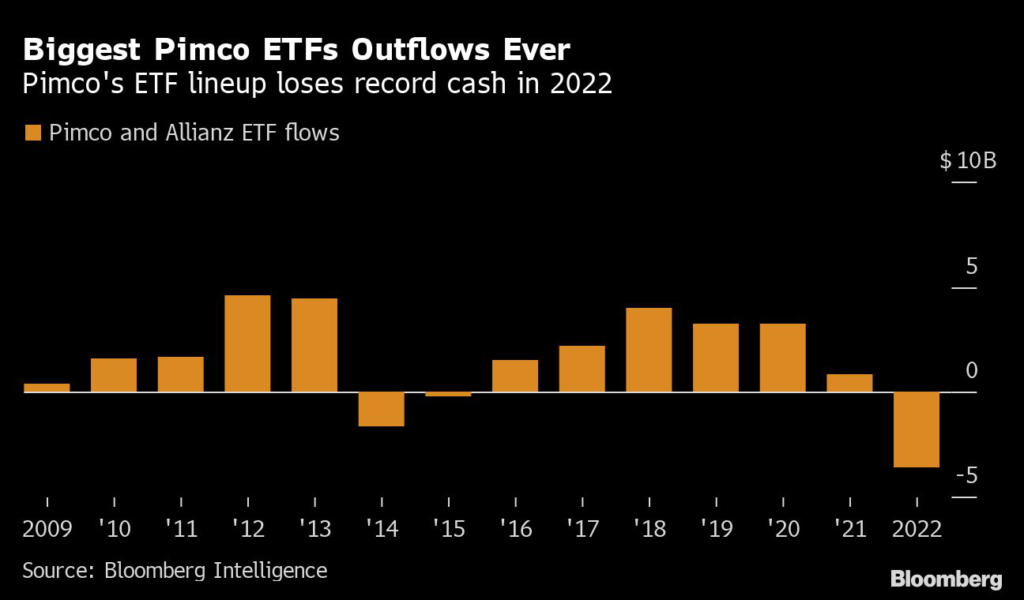A brutal 2022 for bonds delivered the worst year ever for Pacific Investment Management Co.’s exchange-traded fund business.
(Bloomberg) — A brutal 2022 for bonds delivered the worst year ever for Pacific Investment Management Co.’s exchange-traded fund business.
Investors pulled nearly $3.6 billion from over 20 Pimco and Allianz-branded funds, the biggest cumulative outflow ever for the asset manager, Bloomberg data show. That exodus also ranked as the largest among US issuers in 2022, a year when ETFs absorbed over $580 billion of inflows overall.
Volatility rocked Newport Beach, California-based Pimco’s bond-heavy ETF lineup in 2022 as a historically aggressive Federal Reserve attempted to combat the worst US inflation in four decades. While fixed-income ETFs raked in billions overall, the bulk of that cash flooded into passive funds. Given that Pimco’s largest bond ETFs are actively managed, investors were quick to exit, according to Bloomberg Intelligence’s James Seyffart.
“While Pimco has a somewhat diversified fund offering, they’re pretty dominantly an active fixed-income shop and the worst place to be for a fund company in 2022 was running active fixed-income funds,” ETF analyst Seyffart said. “So 2022 was not great for them.”
Roughly $194 billion flowed into bond ETFs in 2022 even though more than 90% of those funds posted losses. However, less than $10 billion of that haul went to actively managed funds, Bloomberg Intelligence data show.
While Pimco, Allianz SE’s asset management unit, did have some success stories last year — its long-dated, zero-coupon Treasury fund attracted roughly $600 million — pain at its biggest ETF dwarfed everything else. A record $4.4 billion exited from the $8.8 billion Pimco Enhanced Short Maturity Active ETF (ticker MINT), which once reigned as the largest active ETF, despite record demand for short-dated products.
Pimco didn’t immediately respond to a request for comment.
“There are tons of competitors out there for it now, and if people were using MINT as a sort of cash-like position, those investors likely moved money to alternatives like money market funds,” Seyffart said.
More stories like this are available on bloomberg.com
©2023 Bloomberg L.P.










